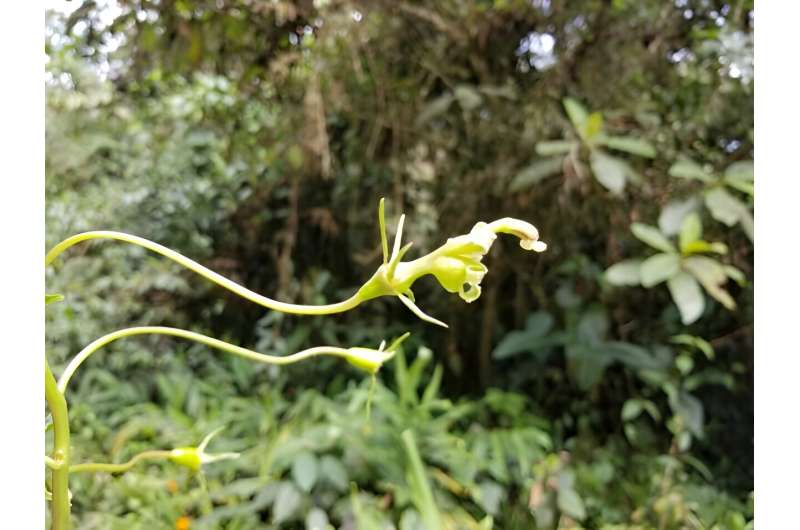This article has been reviewed according to Science X's editorial process and policies. Editors have highlighted the following attributes while ensuring the content's credibility:
fact-checked
peer-reviewed publication
trusted source
proofread
Long stems on flowers are an adaptation that encourages bat pollination, research suggests

Flowers that are pollinated by bats tend to have long stems that make them stand out from the surrounding foliage. New research published in New Phytologist reveals the evolutionary advantage that this characteristic provides to plants to ensure that they are discovered by bats.
In simple backgrounds lacking foliage, bats showed no significant difference in the time it took them to find flowers with long versus short stems, but in complex backgrounds (with arrays of leaves and flowers), bats took nearly twice as much time to locate short-stemmed flowers.
Investigators hypothesize that flowers located away from the surrounding foliage likely help bats to distinguish floral echoes from background clutter during echolocation. Therefore, long stems represent an adaptation to aid bat pollination.
"This work suggests long stems make bat-flowers more 'visible' to bats in the same way that bright red petals help hummingbirds find their flowers," said corresponding author Nathan Muchhala, Ph.D., of the University of Missouri, St. Louis.
More information: Nathan Muchhala et al, Making yourself heard: why well‐exposed flowers are an adaptation for bat pollination, New Phytologist (2024). DOI: 10.1111/nph.20075
Journal information: New Phytologist
Provided by Wiley




















